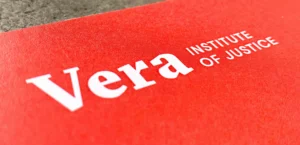VT1000 Pitting Photo Examples is a common issue that can occur in machinery and components, often leading to significant performance degradation if left unaddressed. Photo examples of this condition typically showcase small, localized depressions on surfaces, which can result from corrosion or mechanical wear over time. Understanding the visual characteristics of pitting is crucial for maintenance personnel to identify and address problems early on.
Examining VT1000 pitting through various photo examples can provide valuable insights into the severity of the damage and potential causes. These images often highlight the importance of regular inspections and proper maintenance practices to prevent further deterioration. By recognizing the signs of pitting early, operators can take proactive measures to ensure the longevity and efficiency of their equipment.
What are common signs of pitting in VT1000 machinery?
Common signs of VT1000 Pitting Photo Examples in machinery often include the presence of small, localized depressions on the surface of metal components. These indentations can vary in size and depth, indicating the extent of corrosion or wear. Additionally, operators may notice a rough texture on the affected areas, which can affect the overall functionality of the equipment.
Another indicator of pitting is the appearance of rust or discoloration around the pits, suggesting ongoing deterioration. In some cases, machinery may exhibit unusual vibrations or noises, which can signal that components are no longer operating smoothly due to surface damage. Regular inspections and careful monitoring of these signs can help in identifying and addressing pitting issues before they lead to more severe problems.
How can pitting in VT1000 components affect performance?
VT1000 Pitting Photo Examples in machinery components can significantly impact performance by compromising the integrity of critical surfaces. When pits develop, they can disrupt smooth interactions between moving parts, leading to increased friction and wear. This degradation not only reduces the efficiency of the machinery but can also result in overheating and potential failure if not addressed promptly.
The presence of pitting can create vulnerabilities that allow for further corrosion and damage over time. This ongoing deterioration can lead to unexpected downtime and costly repairs, ultimately affecting productivity. Regular maintenance and timely interventions are essential to mitigate these effects and ensure the machinery operates optimally.
Are there specific photo examples of VT1000 pitting damage available for review?
Specific photo examples of pitting damage in machinery can be incredibly valuable for understanding the extent of deterioration. These images typically showcase various stages of pitting, highlighting how the damage manifests on different components, such as gears, bearings, and shafts. By reviewing these visual examples, maintenance personnel can better identify similar issues in their equipment and take appropriate action.
Such photos often illustrate not only the physical characteristics of pitting but also the context in which these issues arise. For instance, images may display rust or discoloration around the pits, providing insight into the underlying causes, such as corrosion or inadequate lubrication. Having access to a range of examples enhances awareness and fosters proactive maintenance strategies to prevent further damage in machinery.
What maintenance practices can preventVT1000 Pitting Photo Examples equipment?
Implementing regular maintenance practices is essential in preventing pitting in machinery. One effective approach is to ensure that all components are kept clean and free from contaminants, as dirt and debris can exacerbate wear and corrosion. Additionally, maintaining proper lubrication throughout the machinery helps create a protective barrier, reducing friction and preventing the conditions that lead to pitting.
Another critical practice involves conducting routine inspections to identify early signs of wear or damage. By monitoring for surface irregularities or changes in performance, operators can address potential issues before they escalate. Moreover, using materials with higher resistance to corrosion and fatigue can further enhance the durability of components, ensuring long-lasting performance and reliability.
How does pitting appear in photos of VT1000 parts?
VT1000 Pitting Photo Examples of machinery components, pitting typically appears as small, localized depressions or craters on the surface of the metal. These indentations can vary in size and depth, often showcasing a rough texture that distinguishes them from the surrounding areas. Additionally, images may highlight discoloration or rust around the pits, indicating ongoing corrosion and the need for maintenance.
The visual characteristics of pitting can help identify the severity of damage and inform maintenance decisions. Close-up shots often reveal the intricate details of the surface degradation, emphasizing the importance of regular inspections. By analyzing these photos, operators can gain valuable insights into potential causes and develop strategies to mitigate further deterioration.
What are the best methods to repair pitting found in VT1000 machinery?
1. Surface Grinding
- This method involves removing the damaged layer of material through grinding, resulting in a smooth surface. It is effective for shallow pits but may not be suitable for deeper damage.
2. Welding
- For more significant pitting, welding can be used to fill in the depressions. After welding, the surface can be machined to restore the original profile.
3. Epoxy Resins
- Applying a high-quality epoxy filler can effectively repair small pits. Once cured, the resin can be sanded down to create a smooth finish.
4. Plating
- Electroplating or hot-dip galvanizing can add a new layer of metal to the affected area. This method not only repairs pitting but also enhances corrosion resistance.
5. Metal Injection Molding
- This process involves injecting molten metal into the pitted areas. Once cooled, it creates a solid bond that restores the integrity of the component.
6. Laser Cladding
- A laser is used to melt a filler material onto the surface of the metal, which is then cooled to form a dense layer. This method can effectively restore damaged surfaces and improve wear resistance.
7. Sandblasting
- This technique cleans and prepares the surface by removing loose material and corrosion. It is often a preliminary step before applying other repair methods.
8. Coating
- Applying protective coatings, such as ceramic or polymer-based solutions, can seal the surface and prevent further corrosion. This method is often used as a preventive measure after repair.
9. Mechanical Polishing
- Polishing the surface can help minimize the appearance of pitting while also improving the overall finish. This method is more cosmetic and may not fully restore function.
10. Sanding
- For minor pitting, sanding the area can smooth out imperfections. It is essential to use the appropriate grit to avoid further damage.
11. Filling with Metal Putty
- A metal-based putty can be used to fill pits. Once cured, it can be machined or sanded to achieve a smooth surface.
12. Using Repair Kits
- Commercially available repair kits designed specifically for metal pitting can provide easy-to-use solutions. These kits often include fillers, adhesives, and surface treatments.
13. Refurbishment
- Refurbishing the entire component can be a viable option if pitting is extensive. This involves complete disassembly, cleaning, and reconditioning of parts.
14. Replacing Parts
- In severe cases, replacing the pitted components may be the most effective solution. This is particularly true if the damage compromises the safety or functionality of the machinery.
15. Regular Maintenance and Monitoring
- Implementing a routine maintenance schedule can help identify pitting early on, allowing for timely repairs and preventing further damage. Regular inspections can ensure the longevity of the machinery.
AddressingVT1000 Pitting Photo Examples in machinery is essential for maintaining optimal performance and extending the lifespan of components. By employing effective repair methods, such as surface grinding, welding, or coating, operators can significantly reduce the impact of pitting and prevent further deterioration. Regular maintenance and prompt repairs not only enhance the reliability of equipment but also ensure safe and efficient operation in various applications.
Read more at our website.












